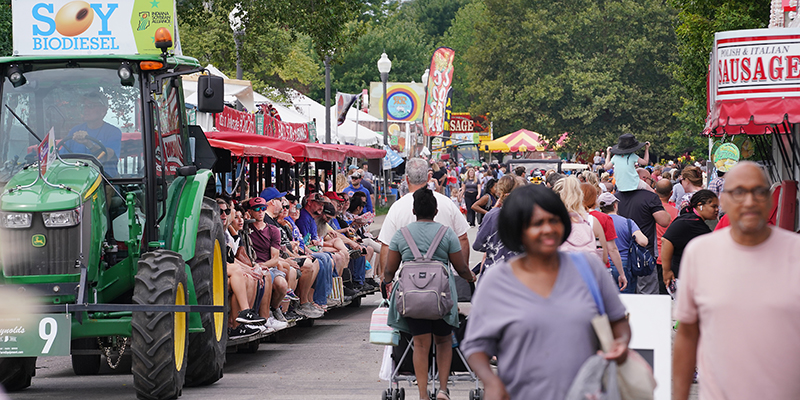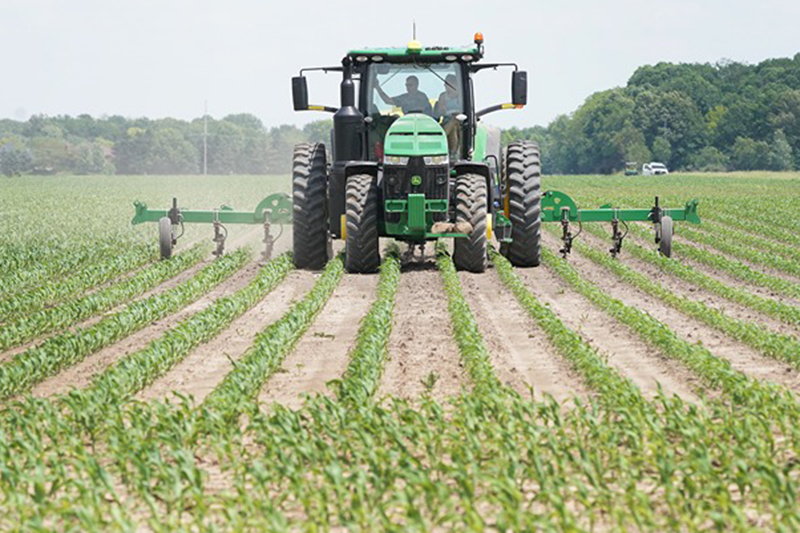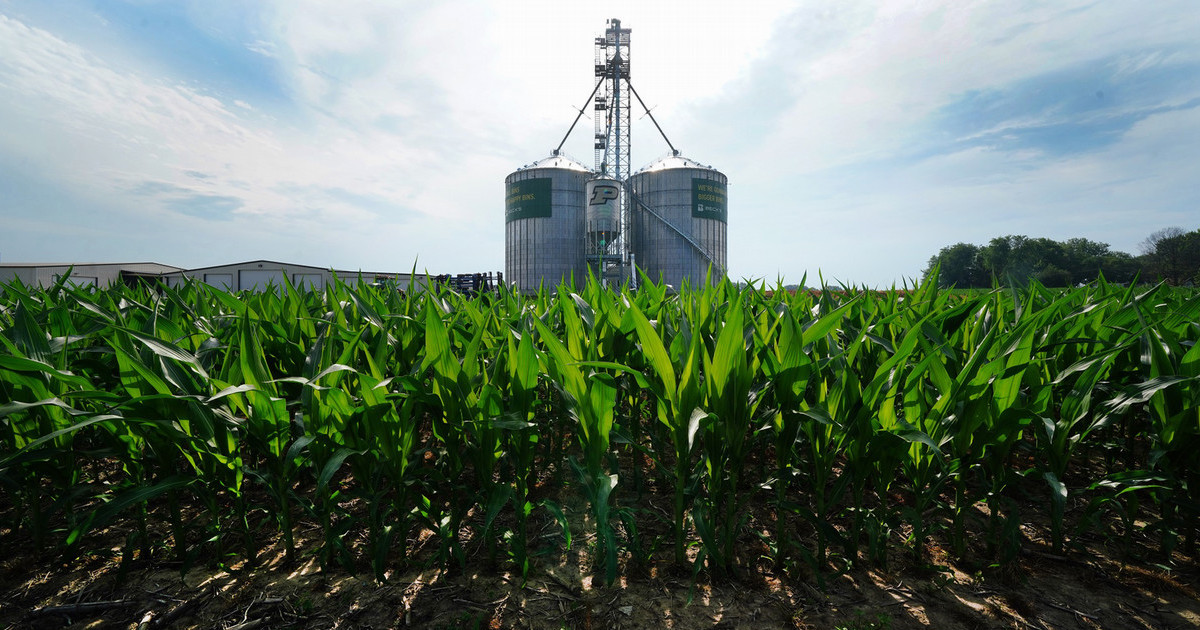It’s gone. They ate everything. Nothing is left. Those are words used to describe the destruction caused by fall armyworms recently in Putnam County and throughout the state of Indiana. So, what have these fall armyworms ate? To be exact, we have heard reports of them damaging lawns, eating alfalfa fields, and destroying a deer plot. Normally, this pest is not of big concern in Indiana; however, this year it has done significant damage.
What does a fall armyworm look like? It is a caterpillar. The head is dark colored with a predominant white, inverted Y-shape on top of it. This inverted “Y” shape is what helps distinguishes the fall armyworm from other armyworm species.
These pests typically remain in the subtropical climates for most of the year, but can be blown northward during hurricane season into the interior of the continent. Once in the interior, they lay eggs in masses on vertical objects (such as sides of buildings) and on young, tender foliage of late-developing crops. The larvae that develop from the eggs can be so numerous that they eventually chew the turf and other plants to the ground. In the case of alfalfa and fescue, they completely strip the foliage from the plants.
The fall armyworms that impacted us a few weeks ago have pupated and are beginning to emerge as adults. These adults will soon begin to mate and lay more eggs that will produce another, potentially destructive, larval generation. The new larval generation may not occur in the same place that the previous infestation occured. That is because the adults will disperse and find a more suitable location for their offspring which may be another nearby forage field or lawn.
Since we know there is a potential for another generation of fall armyworms, there are a few things to keep in mind. Scout for egg clusters now. Scout for the next generation of larva around the last half of September and the first half of October. If you do find fall armyworms, you can try to manage them with an insecticide. There are a number of different insecticide active ingredients that you can use. For turf, some of the active ingredients include bifenthrin, carbaryl, permethrin, and trichlorfon. In alfalfa, some of the active ingredients include carbaryl, cyfluthrin, and permethrin. If you are going to treat an alfalfa field, be mindful of the harvest restrictions listed on the label.
When selecting an insecticide, try to use a formula that is a liquid because it provides better coverage and works more quickly. If you are utilizing an insecticide in your lawn, try to mow before applying it because mowing will help with the application. As always, if you do decide to use an insecticide, remember to read and follow all label instructions.





